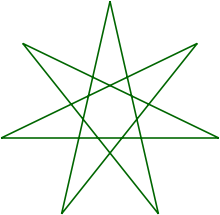- Otherkin
-
Otherkin are a community of people who identify themselves as non-human in all but outward form, contending that they are, in spirit if not in body, non-human animals or creatures traditionally associated with mythology or folklore. Belief in otherkin is related to the changeling concept.
The therian, vampire, and draconic subcultures are related to the otherkin community somewhat, and are considered part of it by most otherkin, but are culturally distinct movements of their own despite some overlap in membership.[1]
Some may claim to be able to shapeshift mentally — meaning that they may experience the sense of being in their particular form while not actually changing physically. The existence of Otherkin is variably explained as being made possible through reincarnation, having a nonhuman soul, ancestry, or symbolic metaphor.[1]
Otherkin identify with familiar creatures from mythology, folklore and religion along with various terrestrial animals: angels, demons, dragons, elves, fairies, sprites, aliens [2][3]
The oldest Internet resource for otherkin is the Elfinkind Digest; a mailing list started in 1990 by a student at the University of Kentucky for "elves and interested observers". Also in the early 1990s, newsgroups such as alt.horror.werewolves[4] and alt.fan.dragons on Usenet, which were initially created for fans of these creatures in the context of fantasy and horror literature and films, also developed followings of individuals who identified as mythological beings.[1][5]
On 6 February 1995, a document titled the "Elven Nation Manifesto" was posted to Usenet, including the groups alt.pagan and alt.magick. On Usenet itself, the document was universally panned and considered to be either a troll or an attempt to frame an innocent party. However, enough people contacted the original author of the Elven Nation post in good faith for a planned mailing list to spin off from it.[6]
The modern otherkin subculture grew out of these elven online communities of the early-to-mid-1990s[6], with the earliest recorded use of the term otherkin appearing in July of 1990 and the variant otherkind being reported as early as April 1990.[1]
See also
References
- ^ a b c d e Lupa (2007). A Field Guide to Otherkin. Immanion Press. pp. 25–26, 50, 52. ISBN 978-1-905713-07-3.
- ^ Mamatas, Nick (February 20 2001). "Elven Like Me". The Village Voice, New York 46 (7): 35. http://www.villagevoice.com/news/0107,mamatas,22273,8.html.
- ^ Penczak, Christopher (2007). Ascension Magick: Ritual, Myth & Healing for the New Aeon. Llewellyn Worldwide. pp. 416–417;441. ISBN 0738710474.
- ^ Chantal Bourgault Du Coudray (2006). The Curse of the Werewolf: Fantasy, Horror and the Beast Within. I. B. Tauris. ISBN 1845111583.
- ^ Cohen, D. (1996). Werewolves. New York: Penguin. pp. 104. ISBN 0-525-65207-8.
- ^ a b Polson, Willow (2003). The Veil's Edge: Exploring the Boundaries of Magic. Citadel Press. pp. 95. ISBN 0-8065-2352-2.
External links
Categories:- Otherkin
- Spirituality
- Internet culture
Wikimedia Foundation. 2010.

